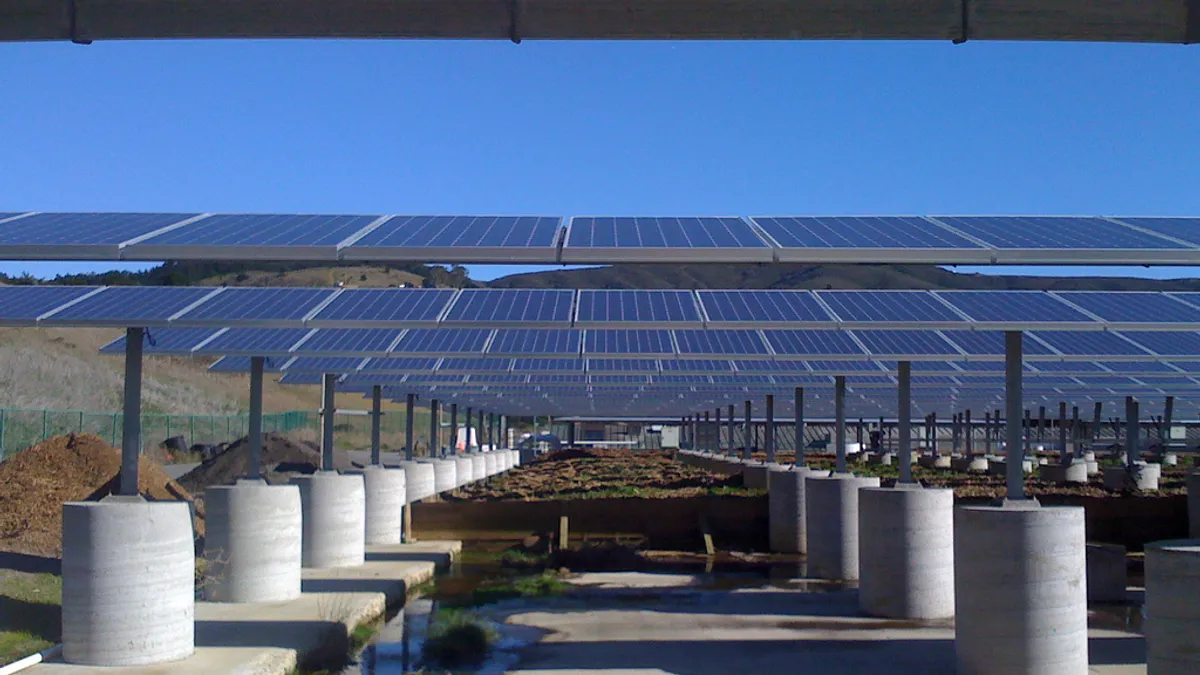Dive Brief:
- The California ISO is curtailing growing amounts of renewable energy this year, according to Platts: about 80,000 MWh in March, up from 47,000 MWh in March 2016, as solar energy continues to grow rapidly.
- There are about 5,000 MW of rooftop solar on the California grid, and afternoon ramps this year look like what the grid operator had expected for 2020.
- Expansion of the western Energy Imbalace Market is one way for that renewable energy to find customers. Arizona Public Service Electric and Puget Sound Energy joined the market as new participating balancing authorities in October, and Portland General Electric is slated to join the market this fall.
Dive Insight:
On the back of repleted hydropower reservoirs and growing solar, the California ISO is curtailing more renewable generation: 60,000 MWh in February and 80,000 MWh in March, compared to 21,000 MWh and 47,000 MWh in the corresponding months last year.
But the expansion of CAISO's Energy Imbalance Market is helping mitigate those impacts, Platts reports. The ISO's report on the fourth quarter operations of the EIM estimates the market was able to use 23,390 MWh of surplus renewable energy to displace over 10,000 metric tons of CO2 emissions.
"EIM is helping to displace less-clean energy supplies with surplus renewable energy that otherwise may have been curtailed, the report concluded.
Fourth quarter estimated gross benefits in 2016 were $28.26 million, bringing the total benefits of the market to $142 million since the California ISO expanded its real-time market to balancing areas outside the ISO.
Those estimates include economic benefits that the ISO is attributing to avoided renewable curtailment.
"If not for energy transfers facilitated by the EIM, some renewable generation located within the ISO would have been curtailed via either economic or exceptional dispatch," the report found. The ISO estimated total avoided renewable curtailments were 6,204 MWh in October, 8,500 MWh in November, and 8,686 MWh in December.
"Avoided renewable curtailments also may have reduced the volume of renewable credits that would have been retracted," the report noted, though it did not quantify additional value associated with that benefit.














